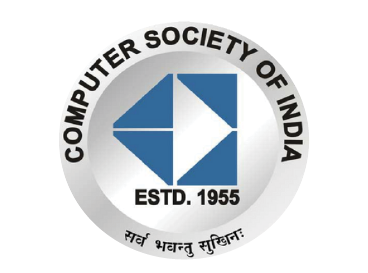



Faculty Mentor:
Dr. Praveen Kumar Gupta
Student Name:
Nikita Marwah (MCA-I)
Bhavya Verma (MCA-I)
1. Data science
Data Science (DS) is a combination of various tools, algorithms and machine learning principles with which the raw data can be used in an effective manner. Basically, it is the study of where information comes from, what it represents and how it can be turned into a valuable resource in the creation of business. Data Science came from the combination of 2 words, i.e. Data mining and computer science. With the emergence of web 2.0 people started interacting with the websites which leads to the collection of a lot of data. This data was called as big data. So, with the rise of big data leads to a rise in data science. So there was a need of computing power to manage this data. Data Science is often considered same as machine learning. But machine learning is a part of data science. Machine learning is a tool that essentially automates the data-processing portion of data science. Machine learning uses advanced algorithms that learn on their own and can process massive amounts of data in a fraction of the time it would take a human.
2. Components of data science and their applications in smart glass
Data science is nothing but a concept to understand and analyze the original data. Data science thus brings together some components that are statistics, machine learning, artificial intelligence, data mining, and visualization.
ARTIFICIAL INTELLIGENCE is the ability of a machine to think and perform actions by itself. It is a very wide field which is growing with the emergence of technology. Artificial intelligence can be applied to a number of concepts. Biometric passwords, digital image processing, handwriting recognition, speech recognition, are some applications that artificial intelligence has worked on to make smart glasses a more magnificent invention. Not only this, virtual reality environment that we experience, is a gift of artificial intelligence. But it is also one of the most complicated technologies to work on. Machines are not smart and to make them so, we need a lot of computing power.
MACHINE LEARNING is the ability of a computer system to learn from the data and improve itself from experience without the need for any explicit programming. For example, we can program machines like “Smart Glass” to recognize human beings and with time the accuracy of machine to recognize a human being may increase. So the machine gathers the data with time and makes the algorithm learn to recognize human beings with more accuracy. One application of machine learning in projects like smart glass is activity controlling for improvement of surveillance services. And we get these concepts with the help of machine learning, working in the backend.
DATA MINING, a widely used term in various fields, is a concept related to data cleaning, data pre – processing, and integration of databases. Visual data mining provides us with a clear and brief description of data, thus, benefitting projects like “smart glass” in research analysis. Visualization and data mining, thus proved to be essential for providing better visualization to the users.
3. Overview
“Smart glass”, an exploration to build a new era in the field of technology.
Day by day, where everyone is exploring new mechanics, there are older technologies too, that are still controversial. One of which is a Smart Glass. This article focuses on smart glass, the concept behind it’s discovery, applications and impact of DS on the market, and its lack of existence. A smart glass, something more than ordinary specs, has made the generation feel more comfortable with the emerging technologies. Smart glasses have been in the news from years. Many times being experimented, tested and disapproved too, but still no one can ignore the wondrous idea behind it. Smart glass is something like a computing device in front of the eyes. No matter where the person is, what the location is, either standing or sitting, a smart glass can easily enhance the user’s vision. The basic idea behind this invention was to create a virtual world for the user to relate and get in touch with. Being worn by many people from the 13th century, it was 21st century when it actually came into the market. Steve Mann, a Canadian researcher and inventor, was the man behind smart glass. But unfortunately, some reasons bought it to failure even before getting fully launched.
4. What a smart glass is?
Smart glasses are wearable computer glasses that add information to what the wearer sees. Glasses that can give a description regarding what we see. One of the main reasons behind the invention of smart glasses, parallel to smart phones, was to make it easy for the spectacle wearers to get engaged with the techs, and they don’t need to remove their glasses for having experiences of the virtual world. A smart glass supports a number of additional properties that make the user explore many things at the same time. Bluetooth, Microphones, GPS, wi-fi, all are provided by a single smart glass. It is not worth to use the word “smart phones” instead of “smart glasses”.
Sounding like something out of a science-fiction movie, but has made an immense impact on the technology mindsets. We can record movies, take photos, and can send and receive audio and video files to and from others. Taking pictures is now a little easier. And the idea is that you can do it hands-free. Some smart glass models also feature full life logging and activity tracker capability. Voice translators are other smart concepts under the working of smart glasses.
5. History

A story that will be in history, something that will be told to the future generations. Yes, smart glasses have become a story since 2015, when the program was made to an end. April 2011, first time when Google announced the PROJECT GLASS. By years, Google worked. By 2012 & 2013, wish to patent ideas came. Glass shapes, workings got explored and Google started selling its wearable to qualified "Glass Explorers" for an eye-watering sum of $1,500. Google was thinking something different as usual, so the commitment was to make it for all form glasses. It was 2014, when the basic problem arrived, that was “looks”. June 2014, Google invented a new way of delivering sound to the Glass wearer: ultrasonic waves. But it wasn’t that easy. The complications arose; looks, shape, slimmer body, these issues made restrictions for further designing. It was 2015 when the end of the program got announced. Dream was over for then. An extremely proficient & innovative idea was now dismissed.
But, good ideas always strike back in a more wondrous way. The glass team re-announced the product, “AURA” and is working on the future version of so called, GOOGLE GLASS.
6. Applications
In this section different possible applications are there, that we can categorize as medical, education and entertainment. The goal is to show how useful smart glasses can be in different fields.
Medical
Smart glasses were not primarily made for healthcare, but the healthcare industry is finding new ways to use the wearable technology. Smart glasses can be used by doctors to view the information such as patient’s data within their field of vision and simultaneously performing other tasks or procedures. Doctors need not to look at different screens or stepping away from the patient in order to look for test results. It can also be used during surgeries for data visualization or video recording which will improve the efficiency during surgeries.
Education
Parallel to the medical field, smart glass can be incredibly useful in the classroom. Smart glass can be beneficial for both teachers and students. It can change the educational experience and can help the students to learn in a better way. It can be used to stream videos right in front of the eyes with which a student will have a better clarity of the topic. Teachers can get benefit from smart glass when creating schedules, which can be shared with their students. Smart glass can be used for education in many ways, but for that a lot of applications need to be developed and there are not many developers for smart glass.
Play
Smart glass can be used in the cinemas for better experience. In cinemas it can be used by providing personal subtitles in the language of the choice. It can also be used as a virtual reality cinema experience. Smart glass can change the way people experience a movie. It can also give a new direction to the gaming experience. Augmented reality games can make a big market for smart glass.
7. Challenges
It came to be a professional idea while discovering smart glass concept. Everyone was seeing forward for advancement in the virtual world, especially, the spectacle wearers. The Smart glass companies were trying their best to make it a big market. But few bounds were there as usual. High-profile acquisitions and direct investments by large companies and still challenges remain. Privacy, and the etiquette and ethics of using the device in public and recording people without their permission was the most basic ground behind the lack of existence in the market. Cables are frequently required to connect a hands-free display to the networking, or to the battery pack. While these form factors solve many problems such as battery life and device weight, they still leave many cravings for an all-in-one device. Other bother was the bulky glasses and their high range, which is still persuasive. During the inventing period of smart glass, a number of challenges were to be faced. Because of which, the project came to an end in 2015. So overcoming these challenges proved to be a big task for the smart glass companies. One can say that some market expectations and unreached goals made a quality idea, again a virtual concept in minds for years.
REFERENCES
https://en.wikipedia.org/wiki/Data_science
https://en.wikipedia.org/wiki/Applications_of_
artificial_intelligence
https://en.wikipedia.org/wiki/Smartglasses
https://www.wikitude.com/blog-smart-glasses-challenges-future/
https://medtube.net/science/wp-content/uploads/2017/03/The-use-of-smart-glasses-in-healthcare-–-review.pdf
http://www.gettingsmart.com/2014/07/google-glass-can-used-education/
https://www.vs.inf.ethz.ch/edu/FS2014/UCS/
reports/HermannSchweizer_SmartGlassesTechnology
Applications_report.pdf
https://www.wikitude.com/blog-smart-glasses-challenges-future/